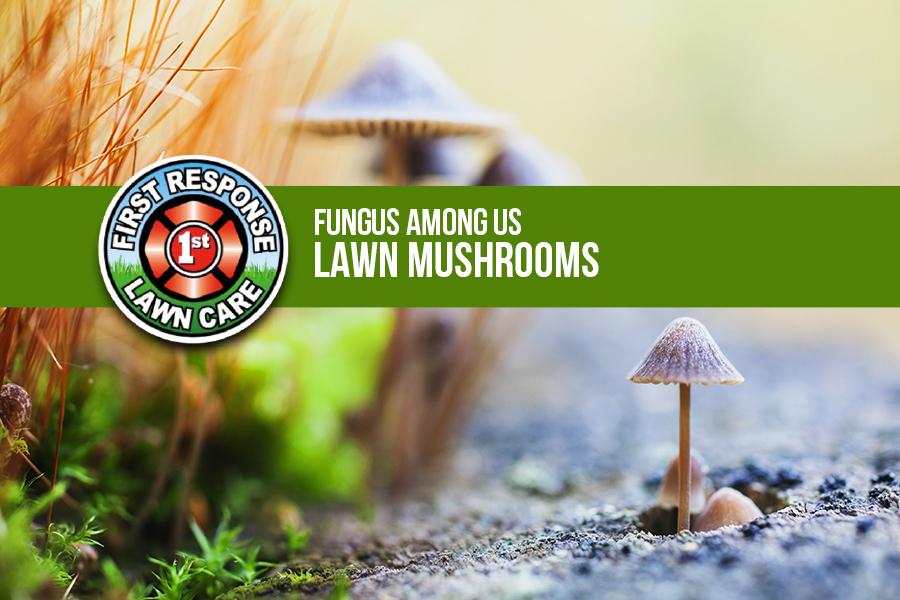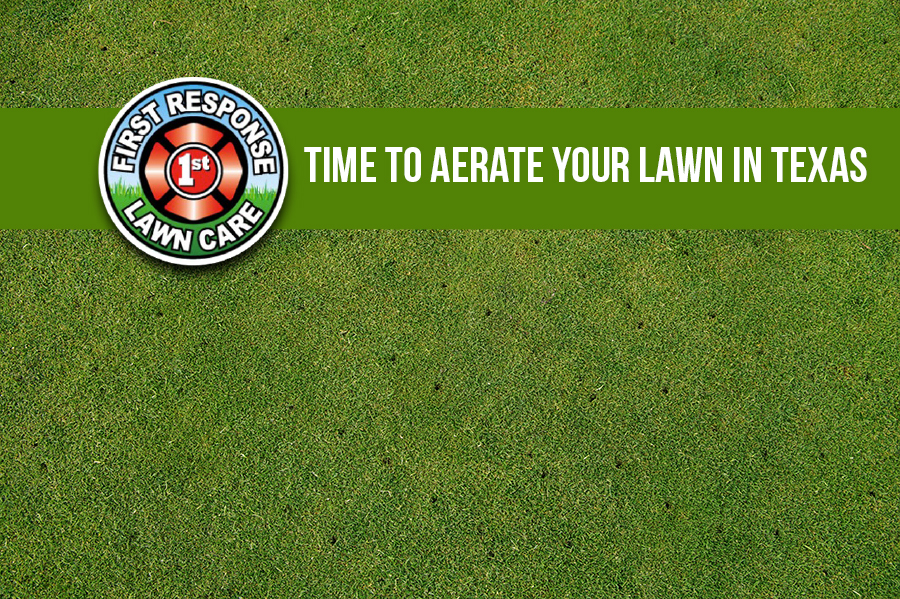
by admin | Jul 21, 2017 | Aeration, Lawn Aeration Rockwall, Lawn Care Royse City
Mushrooms are actually part of a fungus that grows underground, hidden from sight. Lawn fungi and their mushrooms don’t harm a lawn. They’re actually good guys in the ecosystem of your yard, breaking down organic material into nutrients your lawn can use. When most people hear the word “mushroom,” they think of the typical umbrella-shaped one, which is sometimes called a toadstool. Common names for lawn fungus, include puffball, shaggy mane, Japanese parasol or the oddly shaped and smelly stinkhorn.
Common Causes and Solutions
Fungi living beneath lawns are usually long-lived organisms that produce mushrooms when conditions are right. The top reasons mushrooms occur are buried organic matter, high moisture and low light.
Cause: Buried organic matter
A fungus grows by breaking down organic matter. In a lawn, that organic material could be buried timber, a stump, or tree or shrub roots that remain underground after plants have been removed.
Sometimes you can hasten the material’s breakdown by applying nitrogen fertilizer. Use a readily available nitrogen source, not a slow-release one. Aim for a rate of 1/2 to 3/4 pound of actual nitrogen per 1,000 square feet of lawn. If you don’t mind disturbing your lawn, you can also try digging up the organic material.
Cause: High moisture
Periods of prolonged rain can coax mushrooms to form, as can overwatering a lawn. Heavily compacted soil and a thick thatch layer can create drainage problems, which provide ideal growing conditions for mushrooms.
Solution: While you can’t do much about overabundant rainfall, you can address lawn watering practices. Aim for deep, infrequent lawn watering, which encourages turf to develop an extensive root system. Learn tips for lawn irrigation.
For drainage issues caused by compacted soil, try aerating your lawn. If your lawn needs to be aerated, check out our services below.
Lawn Aeration

by admin | Jun 23, 2017 | Aeration, Lawn Aeration Rockwall, Lawn Care Royse City
For warm season grasses, like those you find in our great state of Texas, you should aerate in the early summer. Why? Because warm-season grasses begin their period of active growth in summer. If you aerate a warm-season lawn in late spring to early summer, the ensuing period of rapid growth will quickly fill in the holes you create. If you have Bahia grass, Bermuda, Buffalo grass, Centipede grass, St. Augustine or Zoysia grass, you have a warm season grass.
Aeration Tips
• Follow up the aeration treatment with fertilizing or reseeding your lawn since aeration creates openings for nutrients and seed to penetrate soil.
• The process of aerating can spread weed seeds or portions of weedy roots. Be sure to control weeds prior to aerating.
• If you have a newly planted lawn, wait for at least one year to aerate. This time lapse will ensure that the grass is well established.
• Aerate when soil is moist, but never when it’s saturated. The tines of a lawn aerator penetrate moist soil more deeply; soil that’s too wet clogs tines and isn’t as effective. To achieve the correct moisture balance, your lawn should absorb 1 inch of water – delivered through rainfall or irrigation – prior to aerating. This may mean you’ll water for one hour one day prior to aerating or, if your soil is hard, for shorter times on several days prior to aerating.
• Avoid aerating during drought or high heat. You’ll stress the lawn by allowing heat to dry soil If you aerate in these conditions,
• Plugs should be left on the lawn following aeration, as they contain soil microorganisms that help to break down thatch. These plugs disappear in a short period of time when left on the surface of the lawn.
Call First Response Lawn Care today if you have questions about aerating your lawn. Our technicians are trained to aerate at the optimum time for your soil conditions, giving you the best-looking lawn in the neighborhood.
Lawn Aeration


